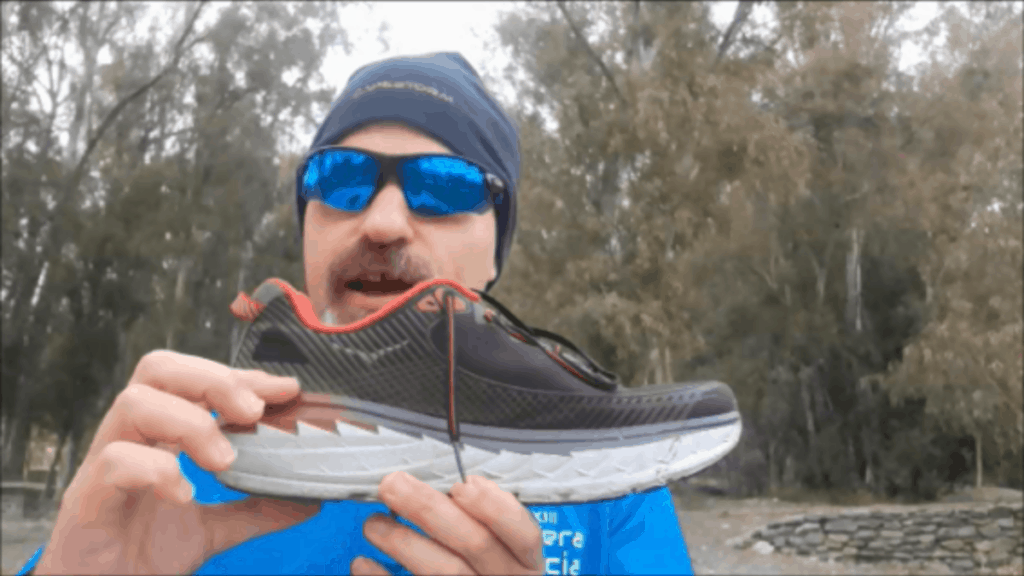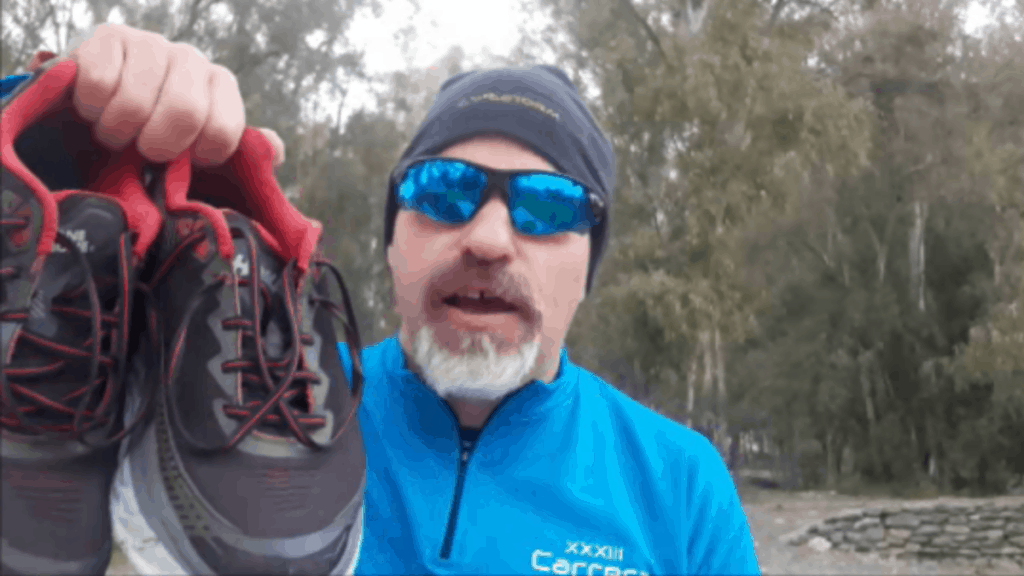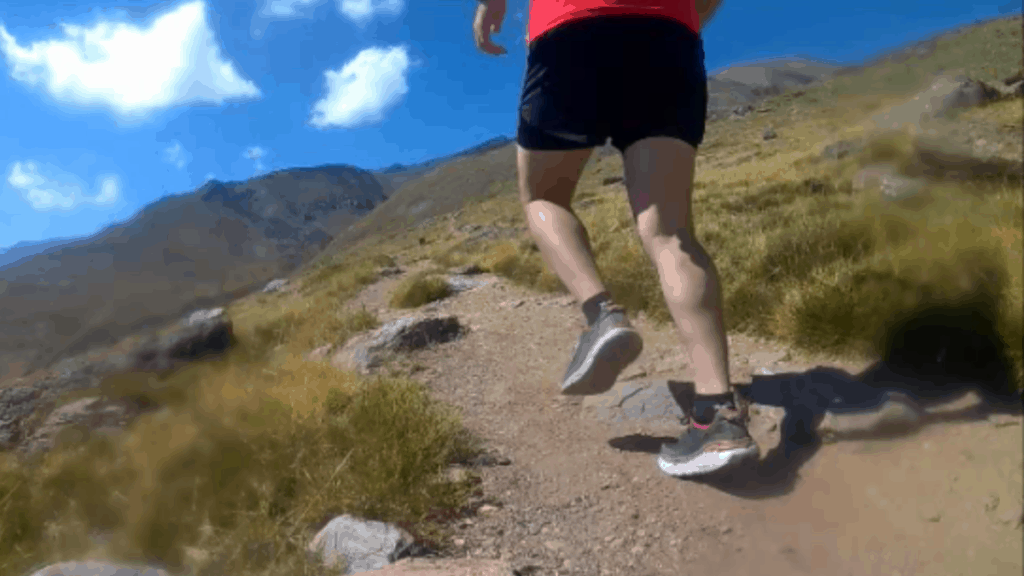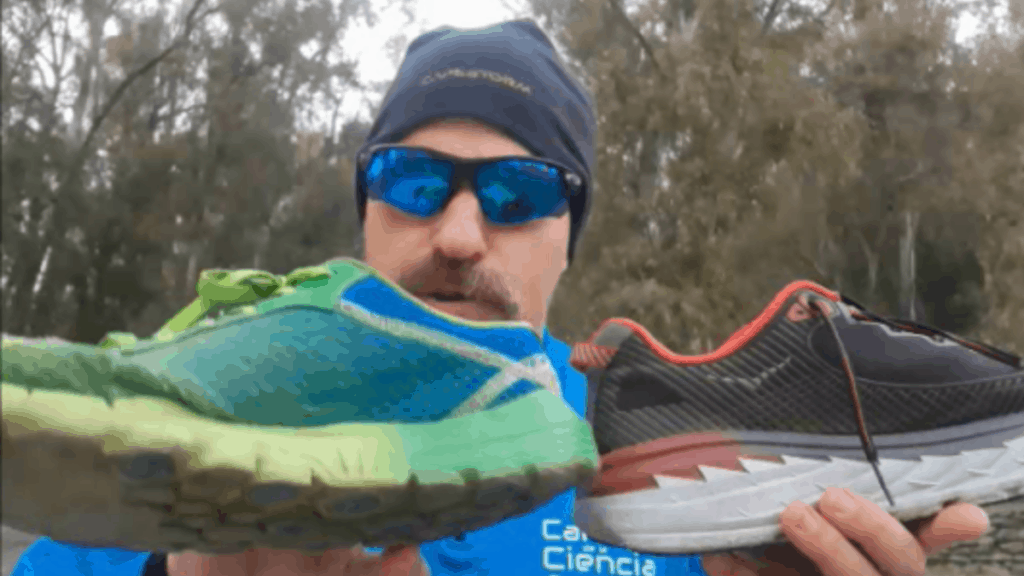
I have thoroughly tested my Hoka One One Bondi 5 running shoes over a total distance of 700 miles in order to give you a good idea of how they stack up against that sort of distance.
The Bondi 5 by Hoka One One is the first road shoe in nearly two decades that impress me enough to go and buy a replacement pair when these are worn out. What I would do differently is buy them a half size bigger than my normal running shoe size to compensate for the narrow toe box.
If you are a trail runner looking for a road shoe that will give you the same underfoot feeling as you have on the trails, then this is the road shoe for you. Let’s take a look at what is so different about the Hoka One One Bondi 5 (available on Amazon) that impressed me so much.

Stack Height Of The Bondi 5
The Bondi 5 has a 37mm stack height at the back and a 33mm stack height at the front.
I felt aware of the stack height when I first put them on and walked a few steps in them. However, once I started running in them I suddenly didn’t seem to notice their height anymore.
Heel-Toe Drop Of The Bondi 5
The Bondi 5 has a heel to toe drop of only 4mm. It is fairly standard for Hoka One One shoes to vary between 6mm and 8mm but with the higher stack height of the Bondi, the flatter profile feels fine.
Being only 4mm in heel drop makes the Bondi 5 a great transition shoe for those wanting to become zero-drop runners.
Shoe Cushioning Of The Bondi 5
The Bondi has double the cushioning of the Hoka One One Clifton. This is significant as it is the Cliftons that were advertised as having pillows under your feet.
I really enjoyed the cushioned feel. The reason that I do most of my running on trails is that the softer trail surface is far better for my joints.
To me, running on the pavement in the Bondi has similar sensations to running on a soft trail with a flatter trail shoe.
Rocker Technology Of The Bondi 5
The soles of the Bondi are made using rocker technology so irrespective of whether you land forefoot, midfoot, or heel, the shoe springs you up and over your toe for a quicker push off.
This was the precursor to the carbon plate technology that is all the rage at the moment. Though these are a fraction of the cost of carbon plate shoes.
The Bondi Shoes Are Light
When looking at the Bondi 5 with its massive stack height I was expecting a much heavier shoe. In fact, they weigh almost exactly the same as my Sketchers racing flats that I wore prior to moving over to the Hokas.
Performance Levels: Running Lifetime PRs At 50
I was really impressed by the performance levels of the Bondi 5. On my second run in these shoes, I set a lifetime personal record for the 10k.
Then just a couple of months later I used the Bondi 5 to set a lifetime best for the half marathon. That half marathon was three weeks before my 50th birthday, so a time of life when I should be getting slower and not faster.
Stability Of The Shoe In Spite Of Height
The soles of the Bondi shoes have a wide base across the ball of the foot. This means that you still feel really stable when pushing off for your stride even though the stack height is so high.
When I run I land midfoot so the entire sole of my foot lands at the same time. The wide contact area under the ball of my foot means that I never feel as if I’m at risk of rolling an ankle, something that I have done more than once over the decades.
Grippiness Of This Road Shoe On Trails
Remember that the Bondi 5 is a road shoe. However, there is no way that over the course of 700 miles that I wouldn’t use them on the trails.
The tread on the Bondi was designed for road use so there are none of the lugs that offer grip on sandy, leafy, or muddy trails.

That said, they work great on both hard-pack trails as well as rocky trails. What is brilliant about the stack height and soft cushioning is I never feel any stones jabbing up into my feet.
Narrow Toe Box Of The Bondi 5
Even though the Bondi is wider across the toe box than the Clifton model, they still felt really narrow for me.
It wasn’t so narrow that I couldn’t wear them or run personal records in them, but running in them was uncomfortable for about the first hundred to hundred and fifty miles.
What I will do when I replace these with a new pair is get a half size larger than my usual shoe size to compensate for the narrowness across my toes.
Comparison To Zoom Ovwa 2.0 triathlon shoes
I loved my Zoom Ovwa shoes. Their uppers were wide enough across the forefoot for my toes. They were lightweight and had quite good cushioning. For my triathlons, the big hole in the tongue and elastic laces made them very fast to pull on in transition.
What was different for me was how the upper and tongue were fused together into an integrated sock that made it possible to run comfortably in them in shorter distance triathlons where there is no time for pulling on socks first.
Even though these are triathlon-specific shoes, they served me very well in running specific events too.
Something that struck me as unusual about the Ovwa was that they had carbon plates as a way to stabilize the midfoot area. This was long before carbon plate technology became popular.
I was tempted to get another pair when mine eventually wore out after about a thousand miles. However, my plan was to transition more towards zero-drop and the Ovwas have a heel drop of 10mm.
The Zoom Ovwa 2.0 triathlon shoes (available on Amazon) are still on the market. Now that newer models have come out, their cheaper price point makes them better value. I rate them highly even if you are not a triathlete.
Comparison To Sketchers GoRun 1 and GoRun 2
My relationship with each of the first two iterations of the GoRun series from Sketchers were tales of opposites.
To me, what sketchers got right were the uppers of both shoes. Both editions were very comfortable on my wide feet.
What I detested about both shoes were the soles. The soft, spongy soles offered no protection for my feet, and if things got damp then any sense of grip vanished too.

These GoRun shoes had no protective/wear-resistant outer sole over the soft, quick-wearing foam.
My first ever run in the GoRun 1 included a two-mile stretch of 2000-year-old cobbled Roman roads. Those cobbles pummelled my feet as if there was nothing to protect them at all. It was a good few days before the bruising eased up enough to resume training. Not the best of first impressions.
When I got my GoRun 2 shoes I decided to stay clear of ancient Roman roads and cobblestones in general. That decision did save my feet from getting bruises.
However, the cushioning under the balls of my feet was essentially collapsed well within the first hundred miles and by the time I got to 120 miles, there was a hole through the sole of the one shoe big enough to stick my finger through from the inside.
Again, this was such a pity because the uppers were so comfortable on my feet. I’d say my ideal shoe would be the performance, cushioning, and endurance of the Bondi 5 soles paired with the comfort of the GoRun uppers.
